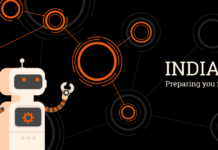Endometriosis is a medical condition that affects more than 176 million women in the world. Endometriosis is one of the major reasons behind chronic pelvic pain, painful sex, abnormal or heavy periods and infertility. Awareness about endometriosis is almost negligible, especially in India.
Let’s throw some light on this disorder that people are unaware of.

What is Endometriosis?
Endometriosis occurs when the layer of tissue that usually covers the inside of the uterus starts growing outside.
This displaced endometrial tissue starts inside your body, but unlike menstrual blood, it doesn’t go the usual route through the vagina.
It triggers inflammation and scars tissue and can cause severe, chronic pain.
In other words, tissue multiplies, ending up in bleeding, and sticky mess. It involves the abdomen, ovaries, bladder, bowel, but at times kidneys, legs, lungs, and even the brain.

The causes of endometriosis are unknown; it could be genetic disposition or immune dysfunction. Pollutants and dioxins in water, air, and food are also factors for the disease.
Living with endometriosis in India
As a culture, Indians are prejudiced about gynaecological disorders, and if it can cause infertility, it is the worst. This is one of the primary reasons why most women shy away from spreading awareness about their health conditions. Imagine, living with a hormonal disorder, suffering from immense pain and still not being able to say it out loud because it’s a taboo.
For women suffering from endometriosis, the chances of getting pregnant are slim. Indian parents live for arranging their daughter’s marriage to a well-suited groom. Unfortunately, if she is diagnosed with something that could cause infertility, it is like the end of the world for her.
What the doctors have to say?
The doctors also function in the same society and with the same mindset, so they recommend to get infertility cured instead. In some case, they might also advise to get married and get pregnant first and then get the ovaries removed. In this case, the bottom line is that it is no longer a woman’s choice to decide what she wants to do with her own reproductive organs.

What is the course of treatment? How does it affect fertility?
Dr. Sonal Kapoor, an Indian gyno, states, “Treatment depends on whether we desire pain relief or improvement of fertility. Treatment includes analgesics, hormonal treatment using combined pills or progesterone pills and surgical treatment using excision and ablation of endometriotic deposits. Fertility can be enhanced using artificial reproductive procedures.”
Some drugs can affect hormone levels, and there are chances that they can, if not cured, control the disease. But then these medicines have severe side effects, and it’s more painful to deal with it. Using injectable drug could bring the level of Oestrogen so low that it could cause young women to enter early menopause.

Surgery can be a treatment, but it should be the last resort. There is no cure for the disease, and it can at best, just be managed. Hormone therapy, which results in forced menopause, may help ease the pain. It’s like a choice between two of your worst losses. Would you choose to be hit repeatedly with a hot iron or bulk yourself up with hormones and suffer depression, anxiety, headaches, hot flushes, nausea, joint stiffness, and brittle bones?
Imagine living with such conditions and having to keep it a secret. Let’s stop whispering and talk it out loud.
















































